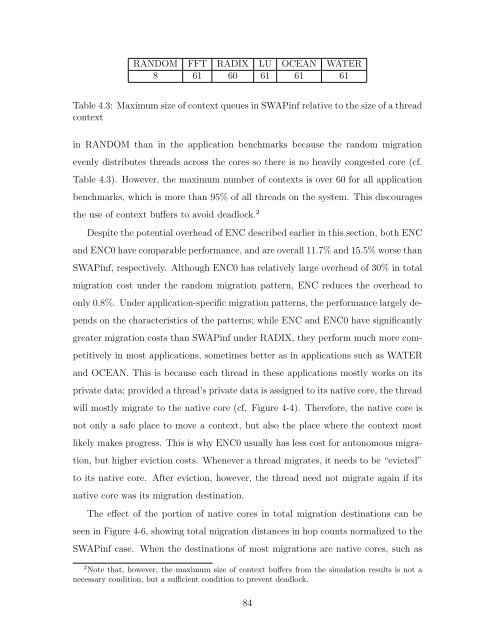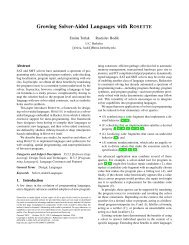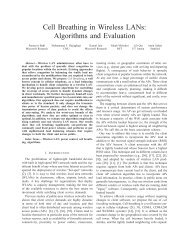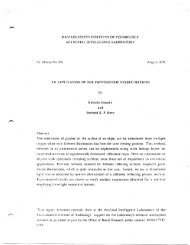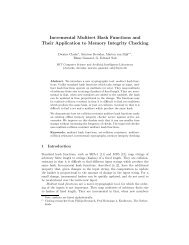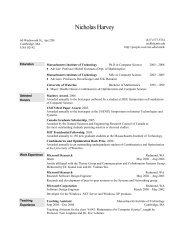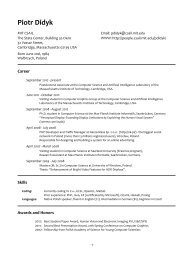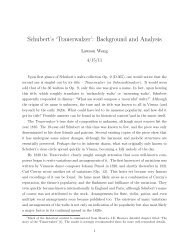On-chip Networks for Manycore Architecture Myong ... - People - MIT
On-chip Networks for Manycore Architecture Myong ... - People - MIT
On-chip Networks for Manycore Architecture Myong ... - People - MIT
Create successful ePaper yourself
Turn your PDF publications into a flip-book with our unique Google optimized e-Paper software.
RANDOM FFT RADIX LU OCEAN WATER<br />
8 61 60 61 61 61<br />
Table 4.3: Maximum size of context queues in SWAPinf relative to the size of a thread<br />
context<br />
in RANDOM than in the application benchmarks because the random migration<br />
evenly distributes threads across the cores so there is no heavily congested core (cf.<br />
Table 4.3). However, the maximum number of contexts is over 60 <strong>for</strong> all application<br />
benchmarks, which is more than 95% of all threads on the system. This discourages<br />
the use of context bu↵ers to avoid deadlock. 2<br />
Despite the potential overhead of ENC described earlier in this section, both ENC<br />
and ENC0 have comparable per<strong>for</strong>mance, and are overall 11.7% and 15.5% worse than<br />
SWAPinf, respectively. Although ENC0 has relatively large overhead of 30% in total<br />
migration cost under the random migration pattern, ENC reduces the overhead to<br />
only 0.8%. Under application-specific migration patterns, the per<strong>for</strong>mance largely depends<br />
on the characteristics of the patterns; while ENC and ENC0 have significantly<br />
greater migration costs than SWAPinf under RADIX, they per<strong>for</strong>m much more competitively<br />
in most applications, sometimes better as in applications such as WATER<br />
and OCEAN. This is because each thread in these applications mostly works on its<br />
private data; provided a thread’s private data is assigned to its native core, the thread<br />
will mostly migrate to the native core (cf. Figure 4-4). There<strong>for</strong>e, the native core is<br />
not only a safe place to move a context, but also the place where the context most<br />
likely makes progress. This is why ENC0 usually has less cost <strong>for</strong> autonomous migration,<br />
but higher eviction costs. Whenever a thread migrates, it needs to be “evicted”<br />
to its native core. After eviction, however, the thread need not migrate again if its<br />
native core was its migration destination.<br />
The e↵ect of the portion of native cores in total migration destinations can be<br />
seen in Figure 4-6, showing total migration distances in hop counts normalized to the<br />
SWAPinf case. When the destinations of most migrations are native cores, such as<br />
2 Note that, however, the maximum size of context bu↵ers from the simulation results is not a<br />
necessary condition, but a su cient condition to prevent deadlock.<br />
84


